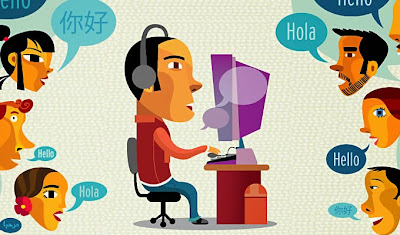Last year I spent significant portion of my time researching web site translation and localization for a company preparing to launch international versions of their web site. Ultimately, it was my job to determine which path the company should take given the considerable confusion out there about the various ways one can go about web site translation and localization.
If you’re in the position of deciding how you should tackle your company’s next web site translation project, read on. Perhaps what I’ve learned will help you, too.
What’s Localization?
My first question: What’s localization? I had a pretty good grasp on the concept of web site translation, but I didn’t understand the difference between localization and translation. As it turns out, the distinction is important and goes beyond translating into your target language.
Localization takes more into account than the written or verbal message in a web site translation. Localization also takes into account cultural norms, taboos, gestures, design issues, and other cultural expectations of your target country.
Localization might even involve decisions about web site usability, especially if you’re talking about launching an eCommerce site. (Online shoppers in your target country probably have different expectations, for example in the modes of payment accepted, delivery period, refund policies etc.)
Web Site Translation Methods
Web site translation methods vary widely and can include automated translation (we’ve all seen Google Translate, I assume?), crowdsourced translation (Facebook has actually leveraged this a bit), freelance linguists, and professional translation agencies. Obviously cost ranges from free (web translation) up to a decent investment (hiring an agency).
I’d definitely used automated web translation tools for getting around a menu and checking information on hotel websites in other countries, but for launching a fairly extensive, technical website in multiple new international markets, they seemed ill-suited for the job. Plus, machine translation doesn’t help with localization issues.
Investigating crowdsourced translation left me with some questions. How would I know if the web site translation sounded right to a native speaker? Who is behind these crowdsourced translations? As it turns out, certain crowdsource web site translations are actually performed by students who are just learning the target language. And again, crowdsourcing didn’t alleviate my fears about accurate localization.
The upshot: While the internet has brought us powerful translation tools, I couldn’t confidently recommend any of them as the sole source for our web site translation. In the end, I interviewed several professional translation services, and they opened my eyes to a great deal I hadn’t even considered. For example: How were we going to manage the ongoing publication of new content on the web site in multiple languages? How were we planning on maintaining our brand voice in translation? What about legal and privacy requirements in our target countries?
Translation Documents Matter
One benefit I discovered working with a translation agency was the creation of translation documents to help manage our web site translation. These translation documents included a style guide for each of our target languages, as well as guidelines for legal compliance, and translation documents for certain technical, back-end aspects of the company’s products. With the technical material, the translation agency was able to work with native-language speakers in our target markets who were also subject matter experts in our field.
In the end, for the size and scope of our project, investing in a web site translation company made a big difference in both our time to market and quality of our international web sites.
